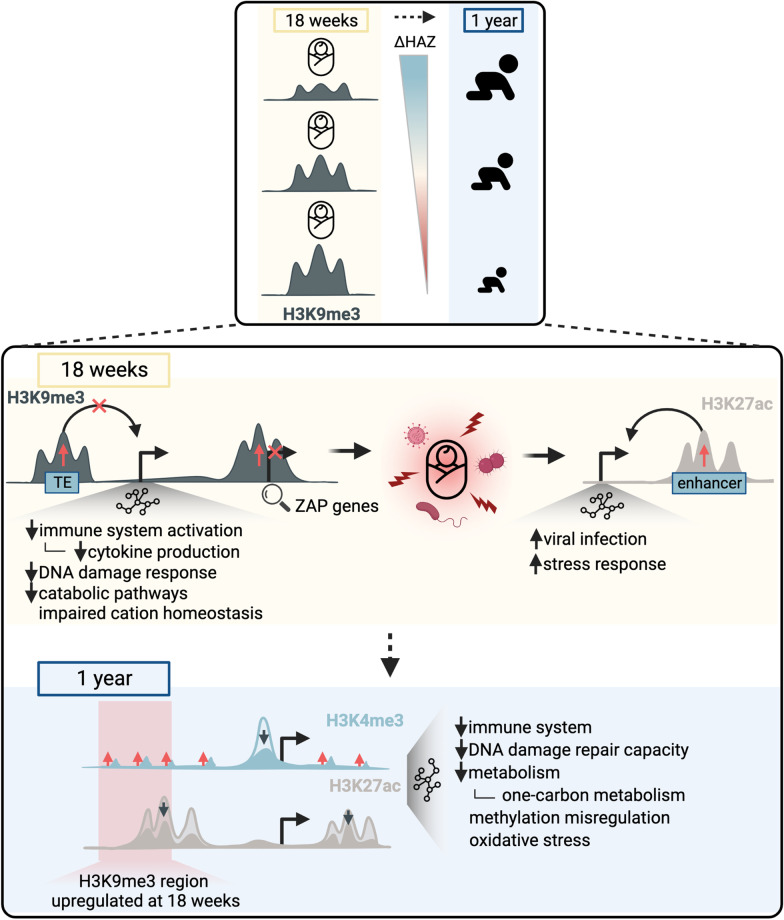Fig. 7.
Summary and working model. Top panel shows that globally increased H3K9me3 levels at 18 weeks of age are associated with poor growth through the model illustrated in the bottom panel. In this model, increased H3K9me3 levels restrict expression of ZAP genes and regulatory activity of key TEs resulting in immature immune responses, and thus high pathogen load and overall stress in children destined to be stunted. These changes then trigger increased stress responses and activation of pathways involved in viral infection as indicated by elevated H3K27ac. As an adaptation to long-term stresses, H3K4me3 and H3K27ac undergo large-scale changes, as described previously [35, 36], which affect the highlighted pathways by one year of age. A significant proportion of H3K4me3 and H3K27ac changes observed in one-year-old children fall into misregulated H3K9me3 regions identified in 18-week-old children

